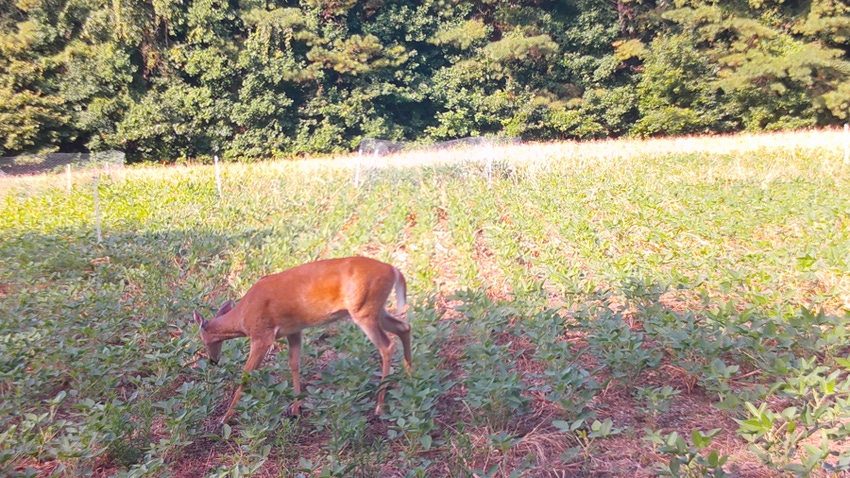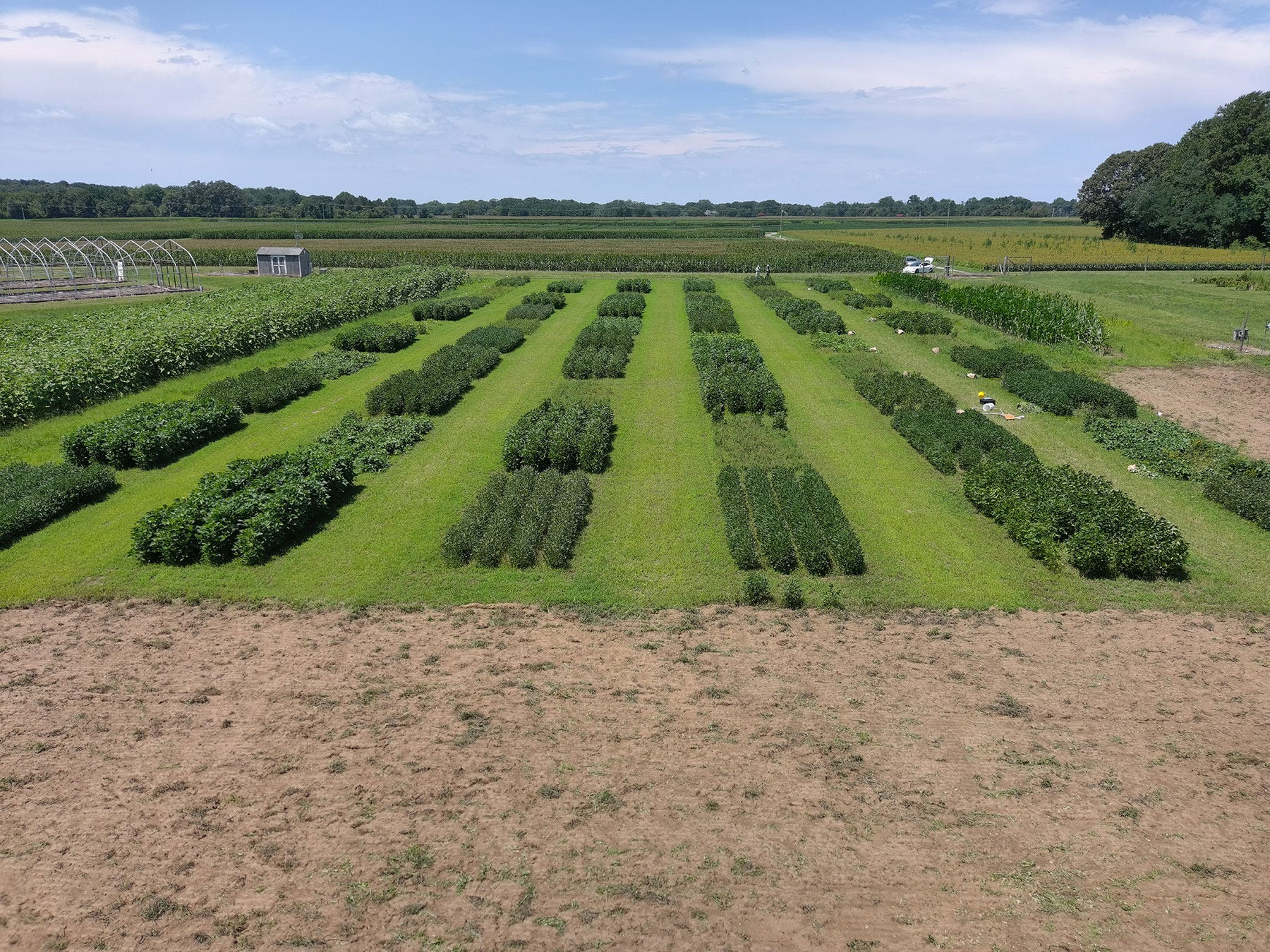
“They’ve become just a pest around here.” That’s what Jim Lewis thinks of the many deer roaming the fields where he farms in Caroline County, Md.
It’s a constant battle each year for Lewis, who farms 500 acres and is also a University of Maryland Extension agent in the county. He’s relegated to the fact that he must deal with deer, but he can’t afford to put up a fence, nor can he sit out in a field waiting to pick some off with a gun.
Each year he plants up to 8% of his fields with some sort of sacrificial crop — whether it is alfalfa, clover or, more recently, forage soybeans. For the most part, it has worked.
“I’ve managed to save way more of the crop than I did before,” Lewis says. “It is about guessing how many deer are feeding and plant the correct number of sacrifice acres to keep them happy.”
Luke Macaulay, a wildlife management specialist with University of Maryland, says deer can eat 6% to 8% of their bodyweight each day. For a 150-pound deer, that can be anywhere from 9 to 12 pounds of green forage.
Macaulay, who works at the University of Maryland’s Wye Research and Education Center, works with farmers planting forage soybean buffers around their fields.
The concept is simple: Provide deer with enough to eat around the edges so they won’t invade the center of corn or soybean fields. This is especially true of fields surrounded by forest.
“The deer have their bedroom in the forest; the cafeteria is the field,” he says.
This is the third year Macaulay has experimented with forage soybeans. This year he tested seven forage soybeans at the Wye center, some of which included:
Group 7 from Eagle Seed
Groups 3.1 and 5.2 (conventional) from Pioneer
Groups 5.2 and 6.2 from BioLogic
Group 4.7 from Brier Ridge
Analysis showed that sugars increase as the forage soybeans matured, supporting the idea that because they are sweeter, deer will prefer these beans over more conventional varieties. But statistically, there wasn’t much of a difference, he says. In terms of biomass, Macaulay says the forage soybeans consistently produced nearly 23% more biomass than the conventional soybeans.

TESTING FORAGE BEANS: This is the third year Macaulay has experimented with forage soybeans. This year he tested seven types of forage soybeans at the Wye research farm in Talbot County, Md.
Tracking behavior
But analyzing the crop is just one part of his research. The other part is looking at deer behavior to better understand when the animals feed and how growers can manage around it.
Macaulay and his team set up 33 trail cameras on the farm where the forage soybean plots were growing. A key finding was that deer energy needs increased around late spring and summer, largely due to pregnant females giving birth to fawns.
“So, come spring, June and July, they will be everywhere, and this corresponds to the time when crops are very susceptible to damage,” he says.
Another finding was that deer foraged weeds extensively.
“I think they like the protection and structure of all the weeds. That kind of gave them cover they can hide out in. So, they kind of like the structure and cover as much as they did the soybeans or cowpeas,” he said.

PROVIDE A MEAL: Macaulay works with farmers planting forage soybean buffers around their fields. The concept is simple: Provide deer enough to eat around the edges so they won’t invade the center of corn or soybean fields.
One finding that he didn’t expect: Deer come out in droves after it rains, especially two days after a storm.
“What I think it is, there's a flush of new growth coming on,” he says, adding that there is more water content in the beans that they might like.
Macaulay says the research shows him growers may want to do more to keep deer at the edges of their fields, either by growing a sacrificial crop or even mowing under the trees to allow more sun to penetrate and more foliage to grow.
Soybeans are resilient in that they can grow back after some damage, but yields will decrease, he says. If the deer eat below the cotyledon, they will kill the plants.
If you plant a forage soybean, Macaulay says to select a maturity group that is close to your conventional beans for fewer passes. A later-maturing variety, he says, is also good if you are going to allow hunting.
Habitat and vegetation management, fencing, the use of repellants, and lethal controls can all be effective on their own, but Macaulay says it is crucial to use more than one method and pair it with lethal control.
“Otherwise, if you’re feeding more deer, you’re going to be growing more deer, so I think it’s important to always remember that,” he says, adding that “forage beans can help, but they are not the silver bullet.”

NIGHT FEEDING: Deer are especially prevalent at night, as witnessed in this video of a group of deer on Macaulay’s research farm.
Necessary sacrifice
Lewis says he plants his sacrificial crop around his corn or soybeans, taking between one and three passes to do it. And he’s had more luck with later-maturing beans, thinking that deer like lusher growth.
Overall, Lewis says he is seeing 20% to 30% less crop damage when planting a sacrifice crop.
“I am sacrificing some of the field but it is worth it,” he says. “Where I was losing 3 acres, now I’m losing an acre decided to forage beans.”
Some growers, he says, have planted even larger segments of their fields as a sacrifice crop. It’s all about dealing with an issue that doesn’t have an easy answer.
“It’s a significant issue,” he says. “My advise to growers is to shoot them, put up some fencing and put a crop in to feed them.”
Read more about:
DeerAbout the Author(s)
You May Also Like






